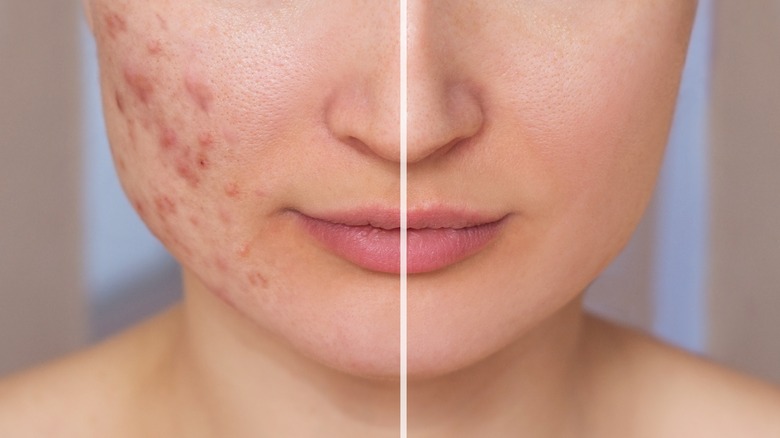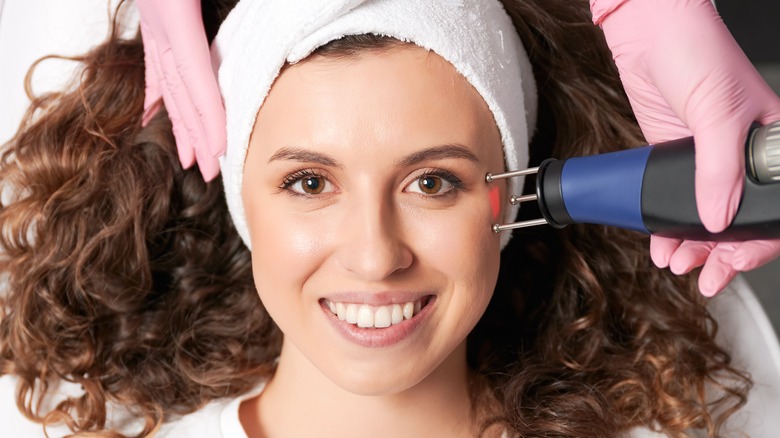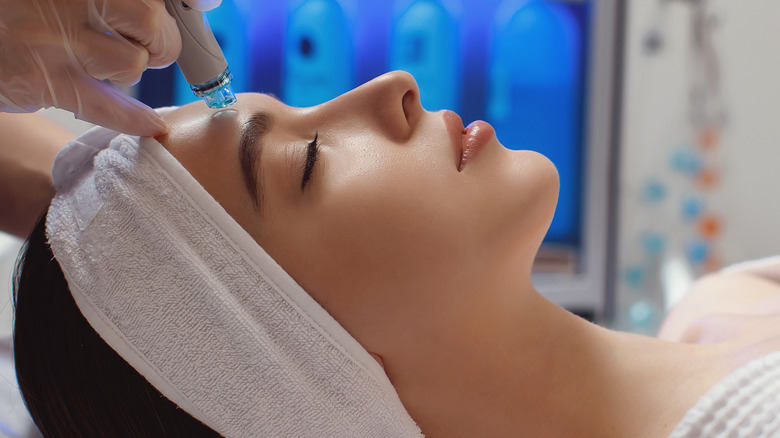What To Know About Subcision Aftercare
Acne comes and goes, but its scarring takes ages to go away. "During a breakout, inflammation is happening underneath your skin. This inflammation causes trauma to skin tissue — leading to scarring," says medical aesthetician Annie Christenson from Houston Methodist. Picking at or popping your acne spots can also lead to scarring. Treatment-wise, there's no such thing as a one-size-fits-all approach to healing acne scars. Since acne scars crop up in different shapes and forms, they require different types of treatments. Many times, you might need more than one type of treatment and multiple sessions before you can see improvements.
An acne scar can be a fine line or a pitted hole on the skin, or it can be raised as a result of excess collagen being produced at the site of a wound. A scar can also assume a sunken or pitted appearance. There are a number of procedures that can help a scar look less noticeable and improve your skin's appearance. For those with sunken scars, subcision is a highly recommended treatment option. A 2015 study polling 40 participants that was published in the journal Dermatologic Surgery reveals that 90% of patients who had subcision treatments to remove rolling acne scars reported improvements in their appearance. Here's everything you need to know about subcision and the aftercare for this procedure.
What is subcision?
"Subcision refers to a subcutaneous incision-less surgery that is considered a minor outpatient procedure that can be used to help treat acne scars," dermatologist Marisa Garshick tells Byrdie. The process involves inserting a needle or a cannula into the skin beneath the scar and gently moving it side to side with the aim of releasing the scar tissue from the skin layers underneath it. Breaking this web and liberating the scar will cause your skin to lift back up, smoothing the crooked surface, reducing scar size, and restoring your skin to a more even appearance.
Subcision, according to Midland Skin, helps to address any problem in which scar tissue pulls the skin downward, such as rolling acne scars and tethered box-scar acne scars. This procedure not only helps to elevate a depressed scar, but it causes collagen to be released at the location of the needle insertion, which also contributes to diminishing the appearance of the scar. Subcision isn't the most ideal treatment for all types of acne scars. For instance, it might be a less effective treatment for thick and raised keloid scars or hypertrophic scars. Subcisions are generally safe, but they need to be performed in a clinical setting by trained medical professionals. "If not done properly, subcision can be quite damaging, and even create new scars in the process," dermatologist Rachel Nazarian tells Byrdie.
What happens after subcision
Before performing a subcision, a doctor will typically give you a local anesthetic so you won't experience any pain during the process. However, after the procedure, you'll experience mild to moderate pain accompanied by swelling and bruising. Less common side effects such as skin discoloration, nerve damage, bleeding, prolonged low-grade swelling, blood clotting, or infection around the injection site can also occur, Dr H Consult warns.
According to Derm.ca, a subcision procedure should be followed by a day or two of downtime. Bruising usually goes away within seven days, and you can expect to see improvements in the appearance of your scars within two to four months. Typically, a patient would need two to three subcision treatments scheduled four to six weeks apart to start seeing desirable results. You might want to use subcision in conjunction with other treatments — such as lasers and peels — to quicken the fading of scars. There will be some inconveniences, but you can rest assured that the results of subcision are long-term.
For the first 24 hours after treatment, you'll be advised against wearing makeup, taking hot showers, and removing the dressings on the treated site. For at least one week after the procedure, you'll have to avoid exercising vigorously or doing anything that puts pressure on your face. Sun exposure can hamper healing, so make sure you apply a broad-spectrum sunscreen before going out. If you have a low threshold for pain, you can ask your healthcare professional to prescribe some pain relievers.


